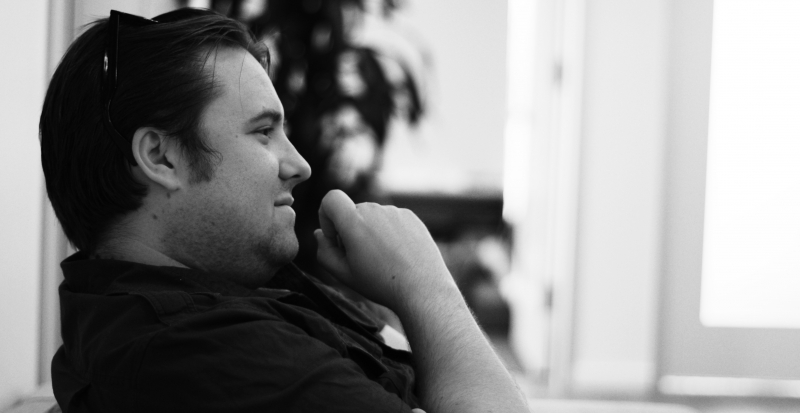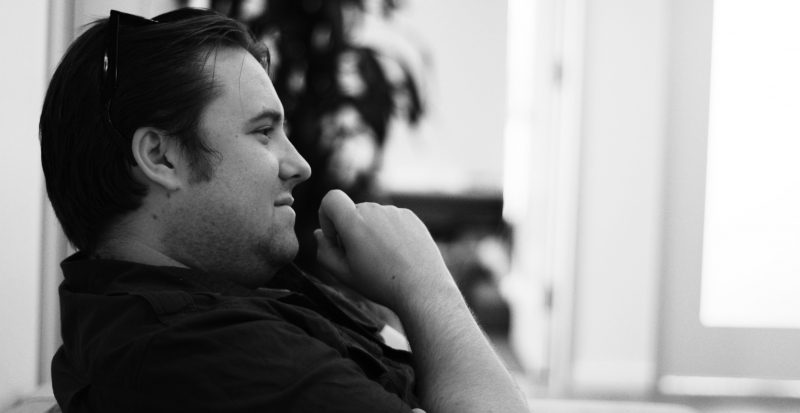Josh Williamson’s Nailbiter: Killer Serial Killer Serial
Community

There is no shortage of incredible new comic titles out there for the discerning fan, but one title in particular is ripping its way through the crowd: Image Comics’ Nailbiter. This brainchild of writer Josh Williamson and artist Mike Henderson brings together the dreary crime noir of Twin Peaks with the gore and horror of Hannibal, as a rogue Army interrogator and small-town sheriff team up to investigate the disappearance of an FBI agent in Buckaroo, Oregon—a town that has spawned sixteen serial killers. SLUG caught up with writer Josh Williamson via email to talk about the title, his processes, and how he has found success by taking control of his creative output.
Readers beware: Potential spoilers lie ahead, including some for as-yet-unreleased issues.
SLUG: Atmosphere and location can so often be underutilized in storytelling, but Nailbiter is the polar opposite—Buckaroo practically is the story, or at least a central character. It’s very reminiscent of works like Salem’s Lot, incorporating that special kind of small town isolation and mystery. How have you, as a writer, worked to establish that kind of powerful atmosphere?
Williamson: It comes from personal experience. I live in Portland now, but for a few years I lived in a small town about 30 miles outside the city. It was very rural and felt very removed from civilization. I would ride my bike around and think about how odd and somewhat creepy the town was. There would be these small houses in the middle of nowhere and I just know … something bad happened there. So when I started to write Nailbiter the vibes I got from that small town became part of the style. Everyone knows each other, is in each other’s business and there is an assumption of a bond—like everyone is on the same page and when you’re not … you’re the outsider immediately. The rain is also an important factor. A lot of people I know in Portland suffer from seasonal depression because of the weather here, the constant raining season. From the start we talked about the tone of the town—its look and how it would create something relatable and about an emotional shorthand to make the town, and then the book, extra creepy. Adam and Mike worked on the colors … and how the colors would give this gloomy feel to everything. Thankfully it all worked.
SLUG: Se7en is a top five film for me and I love that you’ve used it as influence—you make some awesome obscure line references in past interviews, particularly in reference to the question, “What makes a serial killer?” Se7en, like other properties, uses the mystery of that question as a fear tool, whereas I feel Nailbiter is set on exploring it. In the research you’ve done to answer that question and build Warren and his predecessors as realistic, have you found any answers that surprise you?
Williamson: It’s interesting to hear different takes on the matter—articles, experts, casual experts and just people. Is it nature vs nurture? The answers that people have given have been very interesting. I think I wasn’t surprised by the answers but the why people presented them. So sure of what they thought were the reasons. That was the biggest challenge in the start, and I mentioned this in Issue Seven. Or at least Warren did … In the early days of the development, I was trying to find answers for things in the book, and started to find myself trying to find the “why” in life, which is impossible. We’ll never know that for sure. There are too many factors—too many things can contribute to it. So in the book we want to explore all of it. If we’ve thought of it in real life… so have people in the world of Nailbiter.
SLUG: Do any of the Buckaroo Butchers frighten you?
Williamson: No … not so much. I think they’ve done things that creep me out. They are all based on my own fears and dark thoughts, so in a way I’ve already been frightened by them. The Nailbiter himself is creepy to me, but that was how he started. He started as me thinking about my own fears and things that I thought would be scary. So it was more like my own fears that led to the creation of the Buckaroo Butchers.
SLUG: It’s a bit early to tell, but given the small glimpses we’ve been given of something darker happening in Buckaroo—the bees, the underground cells and drawings, etc.—something quite large in scope is taking place. There is a wonderful anticipation building. How do you work to maintain that pacing?
Williamson: Laying out the story in advance. Trying to see what beats we wanted to play. So much of the first 10 issues was about building the world so we could get running with Issue 11. Making sure that we are having fun and enjoying the story and the work. It’s all pieces of a puzzle that is being built. And in some ways I work backwards. I know the end game and see where I want to seed the story. We really want to keep people on the edge of their seat, but at the same time make sure there really is something cool at the end that makes sense.
SLUG: The aforementioned “deep hints” also remind me of layered Lovecraft stories: the inheritance of the monstrousness in The Rats in the Walls, the slow horrific burn of discovery in At The Mountains of Madness, the atmosphere of isolation in The Whisperer In Darkness. Am I correct to suspect quite a few more “layers to the onion” are going to be peeled back in issues to come?
Williamson: Very much so. Issues 11-15 are going to be intense as we get moving on some bigger storyline points. Issue 11 poses some new questions that I hope people dig into. There is a greater secret than “why this town?” at play that could have much bigger ramifications if ever revealed. I love slow burns. I like character beats that build. I like building a mythology and creating visual icons that can be played with later. It takes time to do it but in the end it is worth it.
SLUG: While many properties have asked about the origins of serial killers, Nailbiter is actually delving into the people around the killer, the families and friends who now have to carry the weight of guilt-by-association. It’s an interesting and upsetting premise. What brought about the idea to want to go in such a direction, and did you find any resistance either directly from others or in the form of research obstacles?
Williamson: Years ago, when I was an art director, there was a woman I worked with. She came in one day and was upset about her recent breakup with her boyfriend. We were friends so we started to talk about it. She broke up with him because his Uncle had recently been arrested and accused of being a serial killer. I asked if her boyfriend knew or was involved. Why break up with him? She said, “I can’t be with someone so close to something so evil.” That always stuck with me. We talk so much about the victim’s families but never about how the killer’s family are victims, too. How it completely changes their lives. I looked at Twin Peaks and how Laura Palmer’s death affected the town … now how do the killers affect people? There were no obstacles. There were some people I wanted to talk to that I haven’t been able to. But I’m not the one doing my research.
